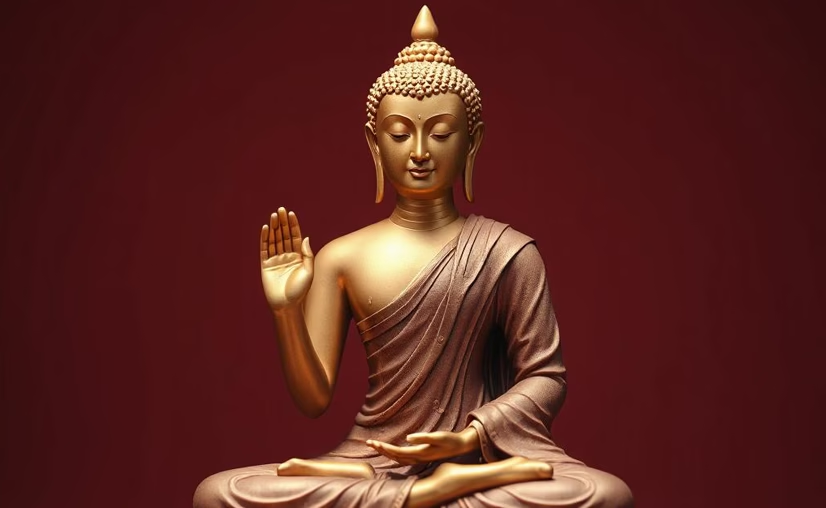Emptiness: A Profound Concept in Buddhist Thought

Emptiness (Shunyata): A Profound Concept in Buddhist Thought
Featured Snippet Intro: In Buddhist teachings emptiness (shunyata) demonstrates that all phenomena exist without inherent essence which leads practitioners toward wisdom and compassion for liberation.
The Mahayana Buddhist schools began their extensive exploration of emptiness or shunyata as a central philosophical concept starting from the 2nd century CE. Based on Gautama Buddha’s teachings about impermanence and no-self it shows that everything lacks an independent existence which supports the development of wisdom and compassion. The concept of emptiness inspires me in Buddhist philosophy because it deconstructs false beliefs to reveal a journey toward tranquility and awakening that connects ancient scriptures with current mindfulness techniques.
What Is Emptiness (Shunyata)?
The Heart Sutra and Nagarjuna’s Mulamadhyamakakarika teach that all phenomena including objects, thoughts, and selves lack an independent and permanent essence. Dependent origination generates phenomena which exist solely in relation to their causes and conditions. Peter Harvey explains shunyata as liberating because it validates the linked nature of existence instead of nihilism by rejecting fixed ideas.
Key Aspects of Emptiness
- No Inherent Existence: Phenomena lack a permanent, standalone essence.
- Dependent Origination: All existence is interdependent in nature which resembles how a wave exists as part of the ocean.
- Freedom from Illusion: Realizing emptiness dissolves attachment and suffering.
Emptiness and the Two Truths
Mahayana Buddhism frames emptiness through the “Two Truths” doctrine: The dual truth system consists of relative truth which describes conventional reality where things seem distinct and ultimate truth which explains that emptiness uncovers their lack of inherent existence. The Heart Sutra presents the teaching “Form is emptiness and emptiness is form” which a 2020 Buddhist Studies Review study explains helps practitioners avoid seeing emptiness as mere nothingness because it leads them toward compassionate behavior.
The Two Truths
- Relative Truth: Our daily encounters such as physical objects and emotional experiences present themselves as tangible realities.
- Ultimate Truth: Analysis reveals these lack independent existence.
- Integration: Practicing wisdom and compassion results from understanding and integrating both relative and ultimate truths.
Nagarjuna’s Contribution to Emptiness
The 2nd century CE Mahayana philosopher Nagarjuna systematized the concept of emptiness through his Mulamadhyamakakarika. Through logical analysis he demonstrated that fundamental concepts such as self, causality, and nirvana possess no inherent existence. His fourfold logical approach challenges binary thinking by offering four possibilities: “It is, it is not, it is both, it is neither.”
Nagarjuna’s Insights on Emptiness
- Deconstruction: All concepts dissolve under logical scrutiny.
- Middle Way: Emptiness avoids extremes of eternalism and nihilism.
- Practical Impact: Frees the mind from clinging, fostering peace.
Emptiness in Practice: Meditation and Compassion
Meditative practices like Vipassana and Tibetan analytical methods enable practitioners to perceive the interconnected nature of phenomena while realizing emptiness. The Prajnaparamita Sutras demonstrate how an understanding of interconnectedness through emptiness leads to compassionate behavior toward others. Research published in the Mindfulness journal during 2021 indicates that meditation practices centered on emptiness can boost empathetic feelings while decreasing egocentric behavior.
Practical Applications of Emptiness
- Meditation: Examine phenomena including emotions to discover their inherent emptiness.
- Compassion: Act kindly, recognizing others’ interdependence.
- Mindfulness: Practice presence while letting go of rigid thoughts.
Review related practices by reading our article on Impermanence and No-Self.
Why Emptiness Matters Today
The concept of emptiness serves as an essential teaching for the 520 million Buddhists across the globe (Pew Research Center, 2020) because it provides a means to overcome materialism and personal conflicts based on ego. A 2021 Mindfulness study confirms that practices like Mindfulness-Based Cognitive Therapy improve mental health through their alignment with mindfulness techniques. The concept of emptiness promotes both humility and unity between people to solve current issues of societal division and ecological emergencies.
Ways to Engage with the Concept of Emptiness
- Meditate: The Heart Sutra can direct you through emptiness meditation practice.
- Study Texts: Read Nagarjuna’s works at Access to Insight.
- Reflect: Contemplate interdependence in daily interactions.
- Join Communities: Discuss shunyata in sanghas or online forums.
FAQ: Emptiness in Buddhist Thought
- What is emptiness in Buddhist philosophy?
- Shunyata demonstrates how phenomena do not possess intrinsic existence but exist solely through dependency on interconnected causes and conditions.
- How does emptiness relate to compassion?
- The understanding of emptiness which reveals universal interdependence fosters compassion because all beings possess an empty yet interdependent existence.
- What is Nagarjuna’s role in explaining emptiness?
- Through his Mulamadhyamakakarika Nagarjuna used logical analysis to define emptiness by proving that phenomena do not possess innate essence.
- Why is emptiness relevant in modern life?
- Emptiness serves to diminish attachment while promoting compassion and mindfulness practices which together help manage stress and bridge societal divides.
- Where can I learn more about emptiness?
- To learn about emptiness you can access texts through Access to Insight or Buddhist Digital Resource Center.
Conclusion: Embracing the Wisdom of Emptiness
The Buddhist idea of emptiness reveals existence’s relational and impermanent nature while leading practitioners to achieve wisdom and peace through compassion. The understanding of emptiness frees us from deceptive perceptions which encourages a purposeful existence. Join the discussion about shunyata in the comments and subscribe for additional Buddhist philosophy insights.